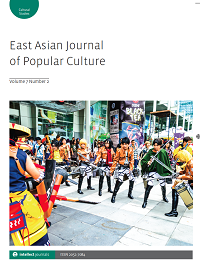
Full text loading...
 , Izzati Aziz1
, Izzati Aziz1 , Xiujie Ma2
, Xiujie Ma2
There are a growing number of studies of the history and spread of taijiquan and qigong. However, there are few studies of taiji or qigong in the media. Based on a study of British media archives, this article traces the construction and representation of taijiquan (‘tai chi’) in British media. In doing so, it establishes and evaluates the meanings and values that have been imputed to the practice in British media discourse. It first examines key representations of tai chi before the COVID-19 pandemic of 2020, but proposes that the pandemic changed its status. It argues that popular understandings of COVID-19 as a respiratory infection led to an upsurge of interest in ‘breath-focused’ practices. In this context, taiji could have stood to gain in popularity. However, the article suggests that the difficulties of learning taiji – especially during a time of social isolation – meant that it was not taiji but the related and hitherto lesser-known practice of qigong that saw an increase in popularity. It concludes with a reflection on ‘authenticity’ and the status of some new translation-constructions of hybrid taiji-qigong practices.

Article metrics loading...

Full text loading...
References


Publication Date:
https://doi.org/10.1386/eapc_00106_1 Published content will be available immediately after check-out or when it is released in case of a pre-order. Please make sure to be logged in to see all available purchase options.